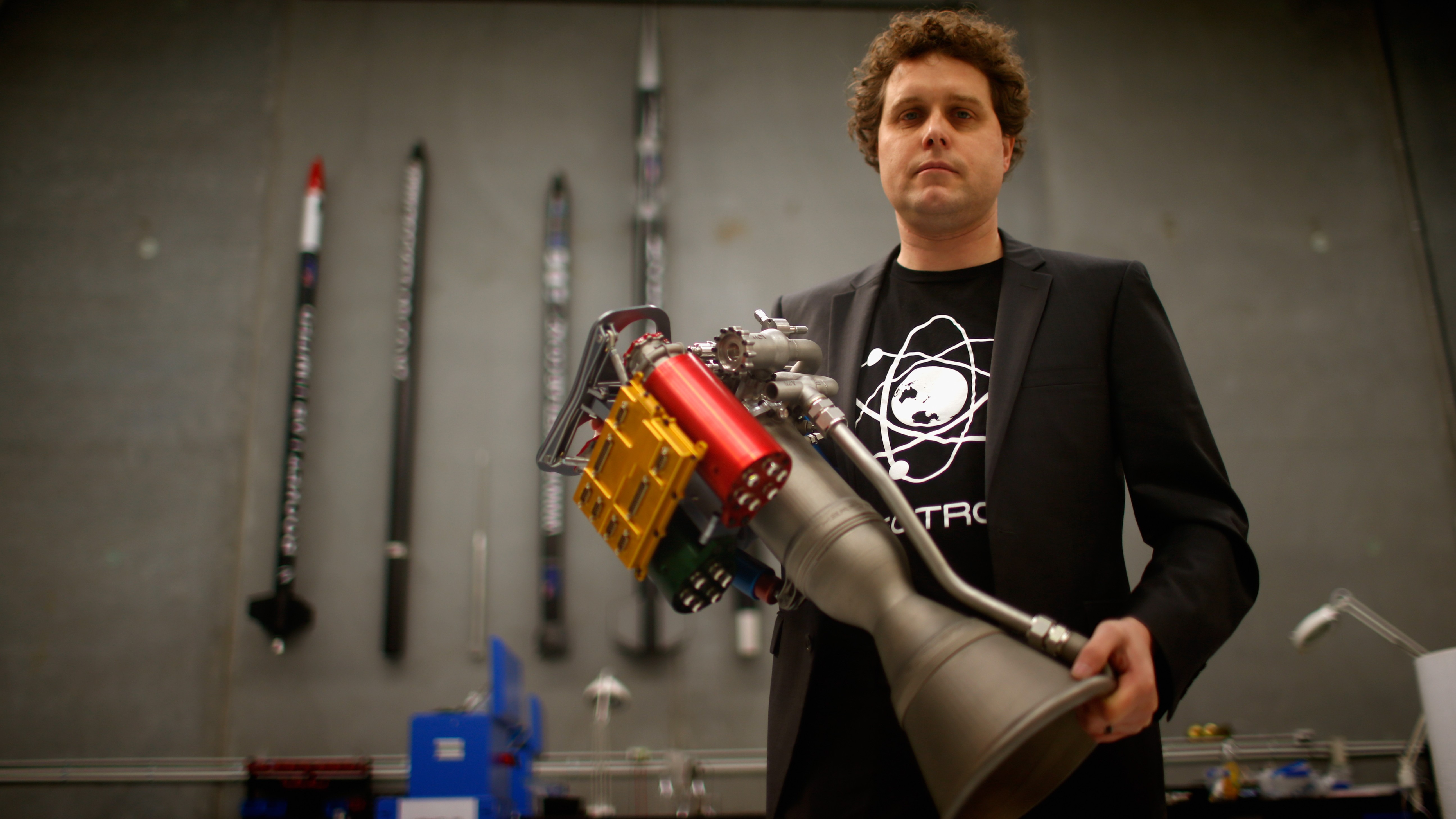‘If it’s possible, it must be done’: Rocket Lab CEO Peter Beck has his eyes on missions to Mars and Venus

Rocket Lab wants to bring NASA’s Perseverance rover samples back from Mars.
As interest in Mars Sample Return (MSR) resurfaces, Rocket Lab founder and CEO Peter Beck says his company already has experience with the spacecraft and hardware needed to get the interplanetary job done.
The MSR mission has taken on new urgency since a Sept. 10 NASA announcement that a Martian surface sample collected by its Perseverance rover contains mineral textures indicative of a possible biosignature — potential evidence of ancient life on the Red Planet. Scientists say determining if those features were actually created by extraterrestrials will require studying them with terrestrial equipment, and Beck believes Rocket Lab can make that happen.
“As a planetary science geek … on my own personal quest to look for life on other planets, the recent Martian discovery is super exciting,” Beck told Space.com in an exclusive interview.
He said Rocket Lab has all the right pieces in place for a Mars return mission, and “it would be great if that program got a new lease of life.”
Perseverance is the first big piece of NASA’s long-held MSR plan.. Since landing in February 2021, the rover has been drilling and filling tubes with Martian rock, leaving these sealed samples behind for a future pickup. The entire MSR campaign — from retrieval rover to ascent rocket to Earth return orbiter — is built around bringing home the samples that Perseverance is gathering.
That campaign, long envisioned to be a partnership between NASA and the European Space Agency (ESA), has been in a state of programmatic evolution for more than a decade. The current framework calls for a NASA rover to retrieve Perseverance’s dropped samples, a NASA Mars ascent vehicle (MAV) to launch them off the planet, and an ESA return spacecraft to rendezvous and dock with the sample container in Mars orbit and haul it back to Earth.
Costs ballooned as the architecture grew more complex, however, and the sample return timeline eventually extended into the 2040s. A 2023 review warned that the program’s total costs could approach $11 billion, and NASA was forced to rethink its plan.
The agency launched a strategy review to explore cheaper, faster options in mid-2024, asking private industry, NASA centers and academics for ideas. Rocket Lab was among a handful of companies to submit a proposal.
As of now, NASA has not selected any of these concepts for development and has left MSR in a replanning phase with partial congressional support while the agency evaluates alternatives and NASA’s budget remains in limbo on Capitol Hill.
Congress did, however, earmark $700 million in NASA’s fiscal year 2026 budget proposal to begin work on a next-generation Mars Telecommunications Orbiter (MTO). This is where Rocket Lab may be able to get its foot in the door, if its already-submitted proposal doesn’t pan out.
Rocket Lab’s MSR concept didn’t alter parameters of NASA’s mission outline, but Beck said the company’s plan offered “a compelling way to get it done at a quick timeframe and a reasonable price,” and included a communications orbiter from the outset.
“The MTO was always part of our architecture,” Beck said. “Nobody sees a footprint on Mars unless there’s a telecommunications orbiter.”
Beck envisions a spacecraft in high areosynchronous orbit — the Mars equivalent to a geosynchronous orbit over Earth. From there, the MTO could use both radio frequency bands and laser comms payloads to relay data between Mars and Earth for decades.
“Having interplanetary laser optical comms would be a real leap forward with respect to bandwidth and not having to burden DSN [NASA’s Deep Space Network],” Beck said.
He added that the orbiter would be sized “for human presence on Mars,” not just robotic missions.
Jeff Bezos’ Blue Origin also aspires to support NASA’s Mars ambitions, and recently announced plans for its own MTO design, which the company said could be ready during the 2028 planetary alignment launch window. (Earth and Mars align for interplanetary missions just once every 26 months.)
Beck points to all that Rocket Lab has already accomplished in space as the proving ground for each component needed to get to Mars and back. He said the company’s vertical integration and mixed expertise of launch, spacecraft production and planetary hardware make it “uniquely positioned” to successfully execute a simplified MTO and MSR mission.
Large government programs, he argued, are slowed by compromises between contractors. “If you’re in control of the entire mission, there is no compromise,” Beck said.
Rocket Lab’s current workhorse is the Electron rocket, which became the fastest launch vehicle to reach 50 missions, achieving the milestone in June 2024 — just over seven years after its debut. This year, it’s on track to launch up to 20 missions. Beck said this is the first year he’s lost track of the number. He called that realization “the definition of success.”
Rocket Lab is also scaling up with Neutron, a partially reusable medium-lift rocket to compete with SpaceX’s Falcon 9. The company recently cut the ribbon on its Neutron pad in Virginia and is targeting a debut flight by year’s end. Neutron will be the backbone of Rocket Lab’s interplanetary reach, capable of launching probes to Mars and other deep-space destinations.
Beck pointed to Rocket Lab’s dominance today in the small launch market as a reason he thinks the company can corner the interplanetary trade. “If you want to build a little rocket to get off a little planet, [Rocket Lab is] probably a good place to start,” he said.
“You’re standing on Mars looking back at Earth and going, ‘Who’s the company that can build the best small rockets in the world?’ You’d probably end up with us.”
Beck stressed, though, that Rocket Lab does far more than just rockets, and that the breadth of the company’s capabilities make it well suited for the MSR mission. Over half of Rocket Lab’s revenue now comes from its Space Systems division, which builds satellites, avionics, solar arrays and flight computers for deep space.
Through acquisitions like that of Sinclair Interplanetary in 2020, Rocket Lab has gained the expertise to produce components like reaction wheels, star trackers and power systems for the company’s suite of satellite buses. SolAero was made part of Rocket Lab’s Space Systems division in 2022, providing an inheritance of operational hardware on Mars — the solar cells that power several Red Planet spacecraft.
Rocket Lab has also already had success with deep-space comms. The company launched NASA’s CAPSTONE mission, which used a cubesat to test navigation and communications in lunar orbit in 2022 for NASA’s Artemis program. It also developed landing and guidance software for Firefly Aerospace’s Blue Ghost lunar lander, which delivered science payloads to the surface of the moon this past March, as part of NASA’s CLPS program.
Rocket Lab also designed NASA’s upcoming EscaPADE orbiters, a pair of small spacecraft headed to Mars that will study how the solar wind interacts with the Martian atmosphere. That mission is set to launch on Blue Origin’s New Glenn rocket before the end of the year.
Even with Mars on the horizon, Rocket Lab has its eyes on other worlds, too. Or, rather, has kept one world in particular in its peripheral vision: Venus.
Beck calls Venus a “passion project for nights and weekends” but insists it is worth the effort. He argues that the clouds of Venus remain one of the best places to search for signs of life in the solar system. “I think there’s a real chance of actually finding a meaningful existence of life in the clouds of Venus.”
“It’s not a super high chance, but it’s possible,” Beck said. “And if it’s possible, it must be done.”



